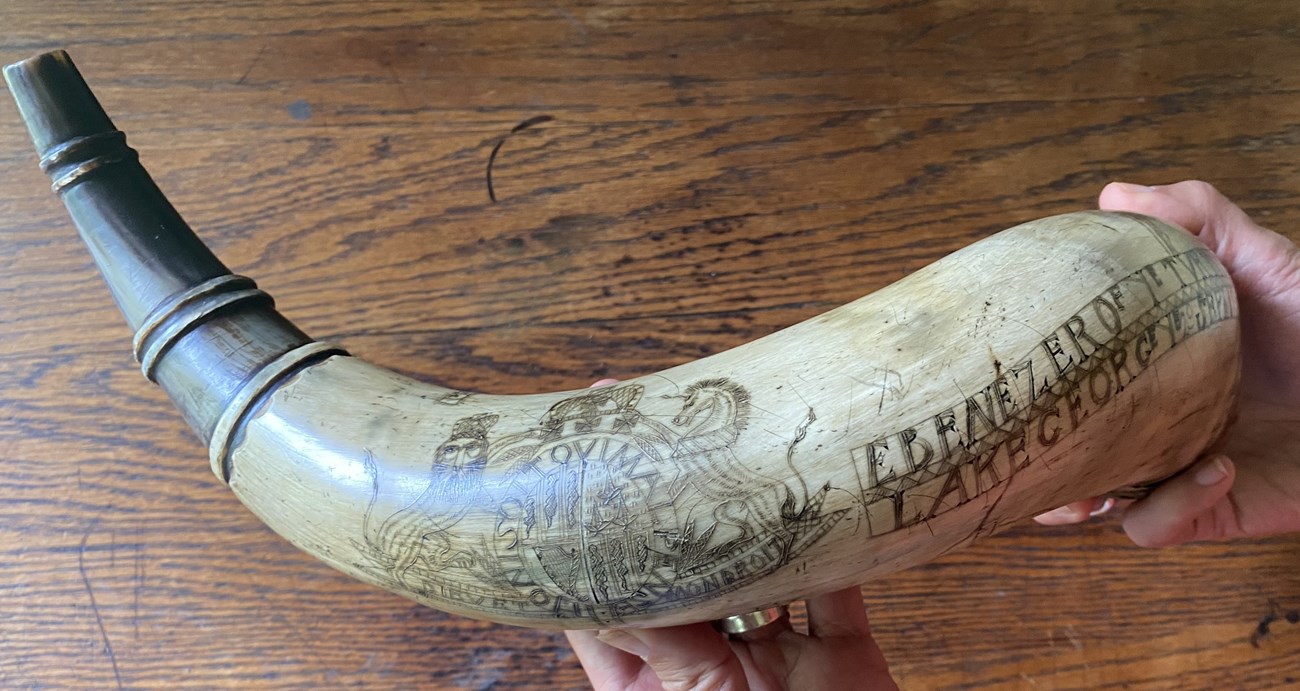Last updated: November 20, 2024
Article
The Elite of the Continental Army: Investigating the Stockbridge-Munsee Infantry Company and Mohican service at the Battle of Kingsbridge

The Stockbridge-Munsee Community’s Arvid E Miller Memorial Library Museum
Recipient: Stockbridge-Munsee Community Band of Mohican Indians
Amount: $200,000.00
In the late summer of 1778, the momentum of the American Revolutionary War had slowed down into an uneasy stalemate. British defeats at the Battles of Saratoga, Monmouth, and their evacuation from Philadelphia were countered by the American defeat at Newport, Rhode Island, and the inability of the Americans to effectively coordinate with their new French allies. As a result, both sides began to harass and raid each other’s outposts, probing for weaknesses and the chance to regain the initiative. Outside of New York City, in what today is the Bronx, elite American Light Infantry were tasked with preventing British troops from making incursions into New Jersey and marauding American supply lines.
One of these elite American units was the Stockbridge Infantry Company. Over the previous hundred years, the Stockbridge had formed an integrated Tribe from Mohican and Munsee families dispossessed of ancestral lands along the Hudson River Valley. During the 7-Years War (French and Indian War) of 1756-1763, the Stockbridge-Munsee had served as British Scouts and Rangers under the famed Robert Rogers to protect what was left of their land, and gain favor with the New York colonial government - an effort not reciprocated by British authorities. Two years after the war, both the British Board of Trade and colonial government dismissed efforts by the Stockbridge-Munsee to reclaim their territory. A betrayal of trust that channeled the Tribe to the Patriot cause during the lead-up to the American Revolution.
Volunteering as minutemen and joining the fight on the American side at the beginning of the Revolutionary War, the Stockbridge-Munsee fought as line infantry at Bunker Hill, the Battles of Saratoga, and Barren Hill. This experience, combined with the service of several individuals during the 7-Years War, meant that the company was extensively battle hardened and some of the best troops in the Continental Army by August of 1778. A distinction that led American General George Washington to include the Stockbridge Infantry Company as part of his veteran light infantry division, troops that Washington relied upon to carry out the most important missions.
On the morning of August 31, the Stockbridge Infantry Company was operating near Van Cortlandt’s Ridge, important high ground between New York City and White Plains, and was tasked with disrupting British patrols. Moving against what was believed to be a small unit of Hessian Cavalry, the Stockbridge Infantry Company unknowingly marched into a trap. Responding to the increased American presence, the British had sent a force of over 500 men to drive the American Light Infantry back towards White Plains. As the company of approximately 60 Stockbridge-Munsee entered the open fields of Van Cortlandt’s Ridge, the British attacked. Holding their line, the Stockbridge-Munsee were outflanked by a combined force of Queen’s Rangers and the mounted cavalry of the Queen’s Legion. Made up of British Loyalists, numerous members of the Queen’s units had served in Roger’s Rangers during the 7-Years War and were now fighting and killing men they once served with or may have considered friends.
Outnumbered and overwhelmed, the Stockbridge Infantry Company broke apart and attempted to withdraw through nearby woods, hoping to use the uneven terrain to avoid capture. But the British Loyalists cut them off, surrounding members of the company and massacring them without providing the opportunity for surrender. Exact numbers are still being debated to this day, with contemporary accounts placing the death toll between 15 – 40 Stockbridge-Munsee killed (potentially 80% of the original company), compared to 1 British cavalryman killed and a handful wounded.
Following what became known as the Battle of Kingsbridge and the ensuing massacre, the Stockbridge Infantry Company ceased to exist as an effective fighting force. Having lost their leaders and a large portion of the younger male generation of the Tribe, the remaining members of the company were honorably discharged by George Washington and allowed to return home. However, by the end of the Revolutionary War, the remaining members of the Tribe were uprooted from their lands in Stockbridge and removed to the Oneida Country in upstate New York. This began a series of forced removals that culminated in the 1856 establishment of the Stockbridge-Munsee Reservation in north-central Wisconsin.
Today, the Stockbridge-Munsee Community Band of Mohican Indians Tribal Historic Preservation Office is actively working as the lead partner in the long-term preservation of the Kingsbridge Battlefield, working with the New York City Department of Parks and Recreation to research and interpret this watershed moment in the Tribe’s history. Using the financial support of a Preservation Planning Grant, the Stockbridge-Munsee will use non-ground disturbing field surveys to better define the boundaries of the battlefield, identify key terrain, and document the movement of combatants during and after the battle.
Preservation Planning Grants from the National Park Service’s American Battlefield Protection Program support a variety of projects that are focused on the preservation and interpretation of sites of armed conflict, including battlefields and associated sites on American soil. In addition to this grant opportunity, the program also provides financial assistance through Battlefield Land Acquisition Grants, Battlefield Interpretation Grants, and Battlefield Restoration Grants, to help generate community-driven stewardship of historic resources at the state, tribal and local levels.
